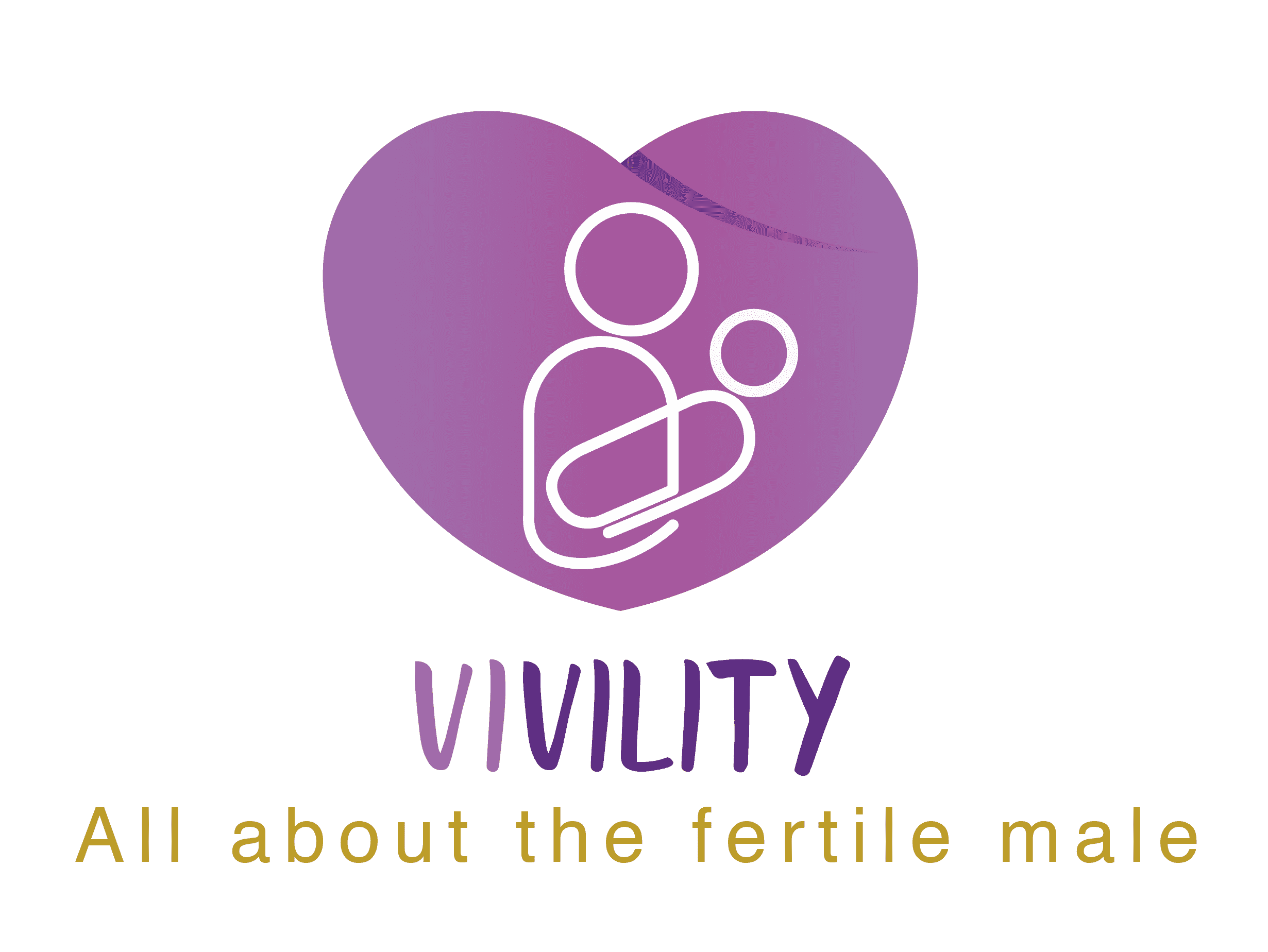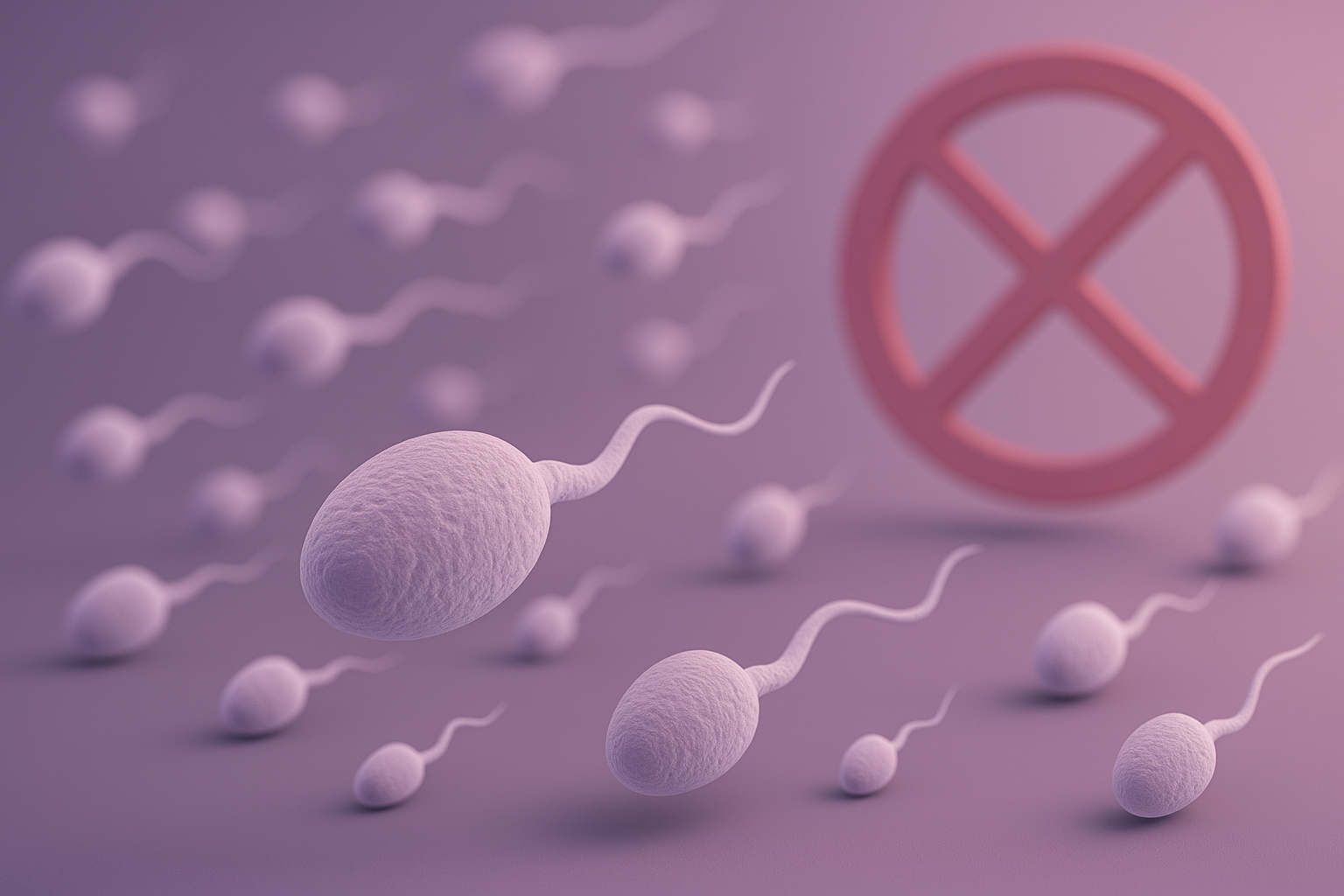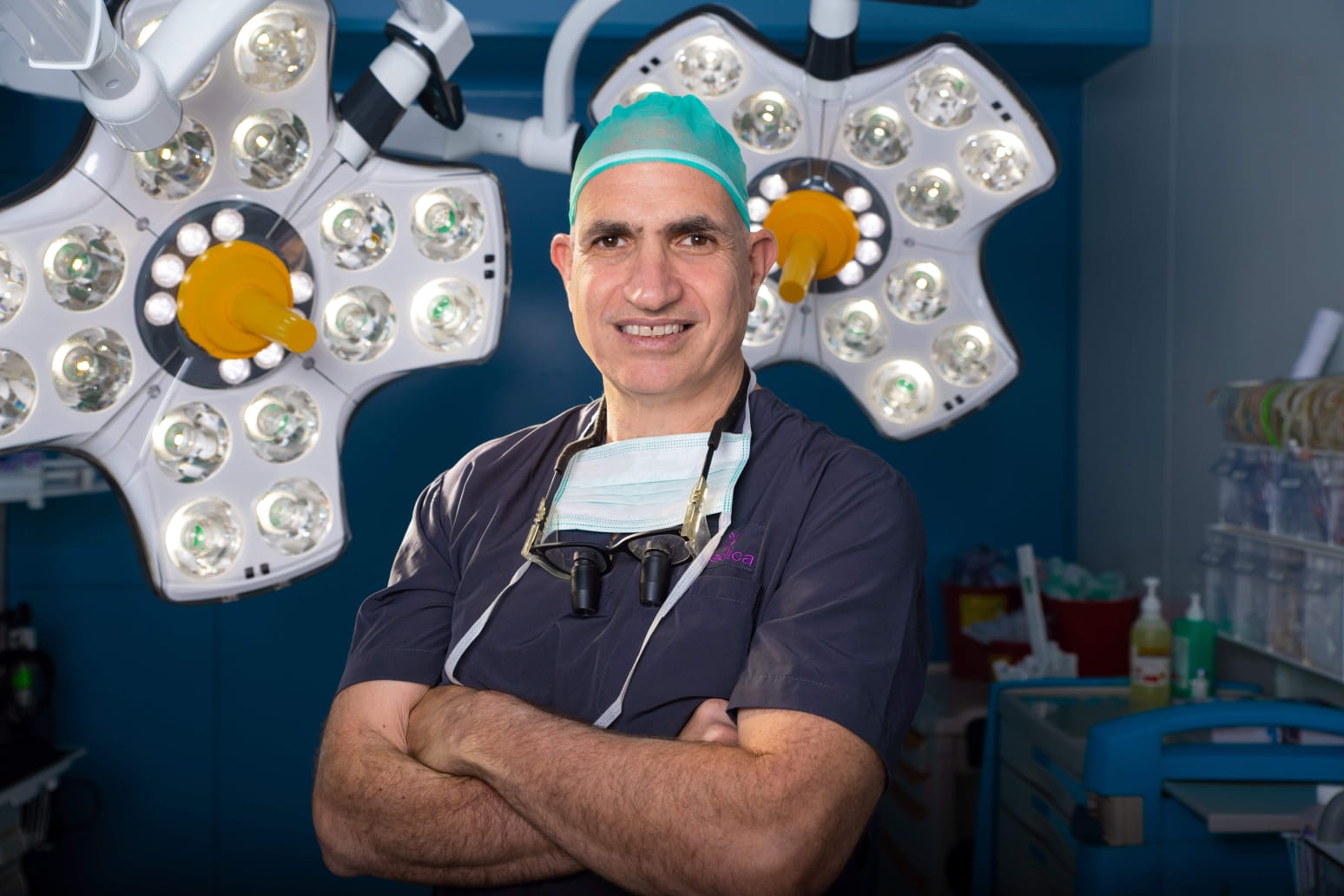Getting diagnosed with azoospermia can be overwhelming, especially when you’re trying to understand what it means for your fertility. Azoospermia simply means there’s no sperm in the semen, but not all types are the same. So, which type of azoospermia is not treatable?
The answer depends on whether it’s obstructive or non-obstructive. While some forms can be treated or even reversed, others especially when the testicles aren’t producing sperm at all, can be more challenging. In this article, we’ll break down the two main types of azoospermia, how doctors diagnose them, and which type may not respond to treatment.
Which Type of Azoospermia Is Not Treatable?
Understanding Non-Obstructive Azoospermia (NOA)
Non-Obstructive Azoospermia (NOA) is a condition where sperm production is impaired or absent due to intrinsic testicular failure. Unlike obstructive azoospermia, where sperm production is normal but blocked, NOA is often more challenging to treat.
This condition can result from various factors, including genetic abnormalities, hormonal imbalances, or environmental influences.
- Intrinsic testicular failure : The testicles fail to produce sperm due to underlying issues.
- Genetic abnormalities : Chromosomal defects can lead to impaired sperm production.
- Hormonal imbalances : Disruptions in hormone levels can affect sperm production.
Genetic Causes of Untreatable Azoospermia
Genetic factors play a significant role in untreatable azoospermia. Conditions such as Klinefelter syndrome, Y chromosome microdeletions, and other chromosomal abnormalities can lead to NOA. These genetic issues often result in irreversible damage to the sperm-producing cells, making treatment difficult.
- Klinefelter syndrome : A genetic condition where males have an extra X chromosome.
- Y chromosome microdeletions : Missing genetic material on the Y chromosome affecting sperm production.
- Chromosomal abnormalities : Structural changes in chromosomes that impair fertility.
Sertoli Cell-Only Syndrome
Sertoli Cell-Only Syndrome is a specific type of NOA where the seminiferous tubules in the testes contain only Sertoli cells and no germ cells. This absence of germ cells means that sperm production is not possible, rendering this condition untreatable.
- Absence of germ cells : No sperm-producing cells are present in the testes.
- Presence of Sertoli cells : Only supportive cells are found, with no sperm production.
- Irreversible condition : Current medical interventions cannot restore sperm production.
Types of Treatable Azoospermia
Obstructive Azoospermia
Obstructive azoospermia occurs when sperm production is normal, but a blockage prevents sperm from being present in the ejaculate. This type is often treatable through surgical interventions that remove the obstruction.
- Normal sperm production : Sperm is produced but cannot reach the ejaculate.
- Blockage in the reproductive tract : Physical obstructions prevent sperm passage.
- Surgical solutions : Procedures can remove blockages and restore fertility.
Hormonal Imbalances
Hormonal imbalances can lead to azoospermia by disrupting the signals necessary for sperm production. Treating these imbalances with hormone therapy can often restore fertility.
- Disrupted hormone signals : Imbalances affect sperm production processes.
- Hormone therapy : Medications can correct imbalances and improve fertility.
- Reversible condition : Treatment can restore normal sperm production.
Varicocele-Related Azoospermia
A varicocele is an enlargement of the veins within the scrotum, which can affect sperm production and lead to azoospermia. Surgical correction of a varicocele can improve sperm production and fertility.
- Enlarged scrotal veins : Affect temperature regulation and sperm production.
- Surgical correction : Procedures can repair varicoceles and restore fertility.
- Improved sperm production : Surgery often leads to increased sperm count.
Diagnosing Azoospermia
Semen Analysis
Semen analysis is the first step in diagnosing azoospermia. This test evaluates the presence and concentration of sperm in the ejaculate, helping to determine the type of azoospermia.
- Evaluates sperm presence : Determines if sperm is present in the ejaculate.
- Assesses sperm concentration : Measures the number of sperm per milliliter.
- Initial diagnostic tool : Provides a baseline for further testing.
Hormone Testing
Hormone testing assesses levels of hormones such as FSH, LH, and testosterone, which are crucial for sperm production. Abnormal levels can indicate hormonal causes of azoospermia.
- FSH and LH levels : Indicate the functioning of the reproductive system.
- Testosterone levels : Essential for normal sperm production.
- Identifies hormonal causes : Helps guide treatment options.
Genetic Testing
Genetic testing can identify chromosomal abnormalities or genetic mutations that may cause azoospermia. This information is vital for understanding the underlying causes and potential treatment options.
- Identifies genetic mutations : Detects chromosomal issues affecting fertility.
- Guides treatment decisions : Provides insight into potential interventions.
- Essential for NOA diagnosis : Helps differentiate between treatable and untreatable types.
Testicular Biopsy
A testicular biopsy involves taking a small tissue sample from the testes to examine sperm production. This procedure can help distinguish between obstructive and non-obstructive azoospermia.
- Examines testicular tissue : Provides direct insight into sperm production.
- Differentiates azoospermia types : Identifies the presence of sperm in the testes.
- Guides treatment planning : Helps determine the best course of action.
Treatment Options for Treatable Azoospermia
Surgical Interventions
Surgical interventions can address physical blockages in the reproductive tract, restoring the passage of sperm and improving fertility.
- Removes blockages : Clears obstructions in the reproductive tract.
- Restores sperm passage : Allows sperm to reach the ejaculate.
- Improves fertility outcomes : Increases the chances of conception.
Hormone Therapy
Hormone therapy can correct imbalances that affect sperm production, often leading to improved fertility and the possibility of natural conception.
- Corrects hormonal imbalances : Restores normal hormone levels.
- Enhances sperm production : Increases sperm count and quality.
- Facilitates natural conception : Improves the chances of pregnancy.
Assisted Reproductive Technologies
Assisted reproductive technologies (ART) such as IVF and ICSI can help couples achieve pregnancy when natural conception is not possible due to azoospermia.
- In vitro fertilization (IVF) : Combines sperm and egg outside the body.
- Intracytoplasmic sperm injection (ICSI) : Injects a single sperm into an egg.
- Alternative conception methods : Provides options for couples with fertility challenges.
Living with Untreatable Azoospermia
Emotional Impact
Living with untreatable azoospermia can be emotionally challenging. Men may experience feelings of inadequacy, frustration, and grief over the inability to conceive naturally.
- Feelings of inadequacy : Struggles with self-esteem and identity.
- Frustration and grief : Emotional responses to infertility challenges.
- Importance of support : Seeking counseling and support groups can help.
Alternative Family-Building Options
For those with untreatable azoospermia, alternative family-building options such as adoption or sperm donation can provide pathways to parenthood.
- Adoption : Provides a loving home to a child in need.
- Sperm donation : Allows for biological parenthood through donor sperm.
- Exploring options : Important to consider all possibilities for family building.
Preventing Azoospermia
Lifestyle Factors
Certain lifestyle factors can influence the risk of developing azoospermia. Maintaining a healthy lifestyle can help reduce this risk.
- Healthy diet and exercise : Support overall reproductive health.
- Avoiding harmful substances : Reduces exposure to toxins and drugs.
- Regular medical check-ups : Help monitor reproductive health.
Environmental Considerations
Environmental factors such as exposure to toxins and radiation can impact sperm production. Taking precautions to minimize exposure can help prevent azoospermia.
- Minimizing toxin exposure : Reduces risk from chemicals and pollutants.
- Radiation protection : Avoids unnecessary exposure to harmful radiation.
- Safe work environments : Ensures occupational safety and health.
Research and Future Prospects
Stem Cell Therapy
Stem cell therapy holds promise for treating untreatable azoospermia by potentially regenerating sperm-producing cells in the testes.
- Regenerates sperm cells : Uses stem cells to restore sperm production.
- Experimental treatments : Currently under research and development.
- Potential future solution : Offers hope for untreatable cases.
Gene Therapy
Gene therapy aims to correct genetic defects that cause azoospermia, offering a potential future treatment for genetic causes of infertility.
- Corrects genetic defects : Targets specific mutations affecting fertility.
- Innovative approach : Utilizes advanced genetic techniques.
- Future treatment potential : Could revolutionize infertility treatment.
When to Consult a Fertility Specialist at Vivility
Consulting a fertility specialist is crucial for anyone experiencing azoospermia. Early diagnosis and intervention can improve treatment outcomes and provide guidance on family-building options.
- Early diagnosis : Identifies the cause of azoospermia promptly.
- Guidance on treatment : Offers expert advice on available options.
- Support for family planning : Assists in exploring alternative paths to parenthood.
Final Thoughts
Understanding which type of azoospermia is not treatable is essential for affected individuals and their families. While some forms of azoospermia present significant challenges, advancements in medical research offer hope for future treatments. Exploring all available options and seeking support can help individuals navigate the emotional and practical aspects of living with azoospermia.
FAQs
What is the main cause of untreatable azoospermia?
The main cause of untreatable azoospermia is often genetic abnormalities, such as Klinefelter syndrome or Y chromosome microdeletions. These genetic issues can lead to irreversible damage to sperm-producing cells, making treatment difficult. Understanding the genetic basis is crucial for diagnosis and management.
How is non-obstructive azoospermia diagnosed?
Non-obstructive azoospermia is diagnosed through a combination of semen analysis, hormone testing, genetic testing, and testicular biopsy. These tests help determine the absence of sperm in the ejaculate and identify underlying causes. Accurate diagnosis is essential for exploring potential treatment options.
Are there any natural remedies for azoospermia?
While natural remedies may support overall reproductive health, they are unlikely to cure azoospermia, especially if it is due to genetic or structural issues. Lifestyle changes, such as a healthy diet and regular exercise, can improve general well-being. However, medical intervention is often necessary for effective treatment.
Can lifestyle changes improve azoospermia?
Lifestyle changes can improve azoospermia in cases related to environmental or lifestyle factors. Maintaining a healthy diet, exercising regularly, and avoiding harmful substances can support reproductive health. However, genetic or structural causes may require medical treatment for improvement.
What are the success rates of treating obstructive azoospermia?
The success rates of treating obstructive azoospermia are generally high, as surgical interventions can effectively remove blockages. Many men experience improved fertility following surgery. Success depends on the specific cause and location of the obstruction.
Can non-obstructive azoospermia be cured?
Non-obstructive azoospermia is challenging to cure, especially when caused by genetic factors. While some cases may respond to hormone therapy or assisted reproductive technologies, many remain untreatable. Ongoing research into stem cell and gene therapy offers hope for future treatments.
What percentage of azoospermia is treatable?
Approximately 40% of azoospermia cases are treatable, primarily those related to obstructive causes or hormonal imbalances. Non-obstructive azoospermia, which accounts for about 60% of cases, is often more challenging to treat. Accurate diagnosis is essential for determining treatment options.
Is azoospermia permanent?
Azoospermia can be permanent, especially in cases of non-obstructive azoospermia with genetic causes. However, some forms, such as obstructive azoospermia, may be reversible with treatment. Early diagnosis and intervention are crucial for exploring potential solutions.


